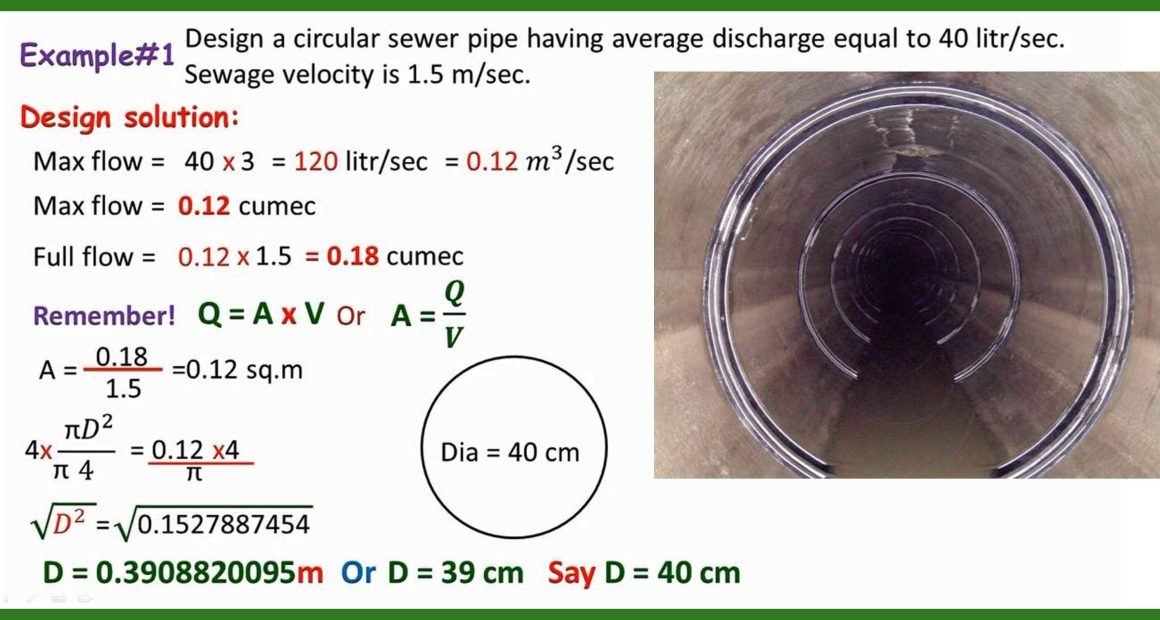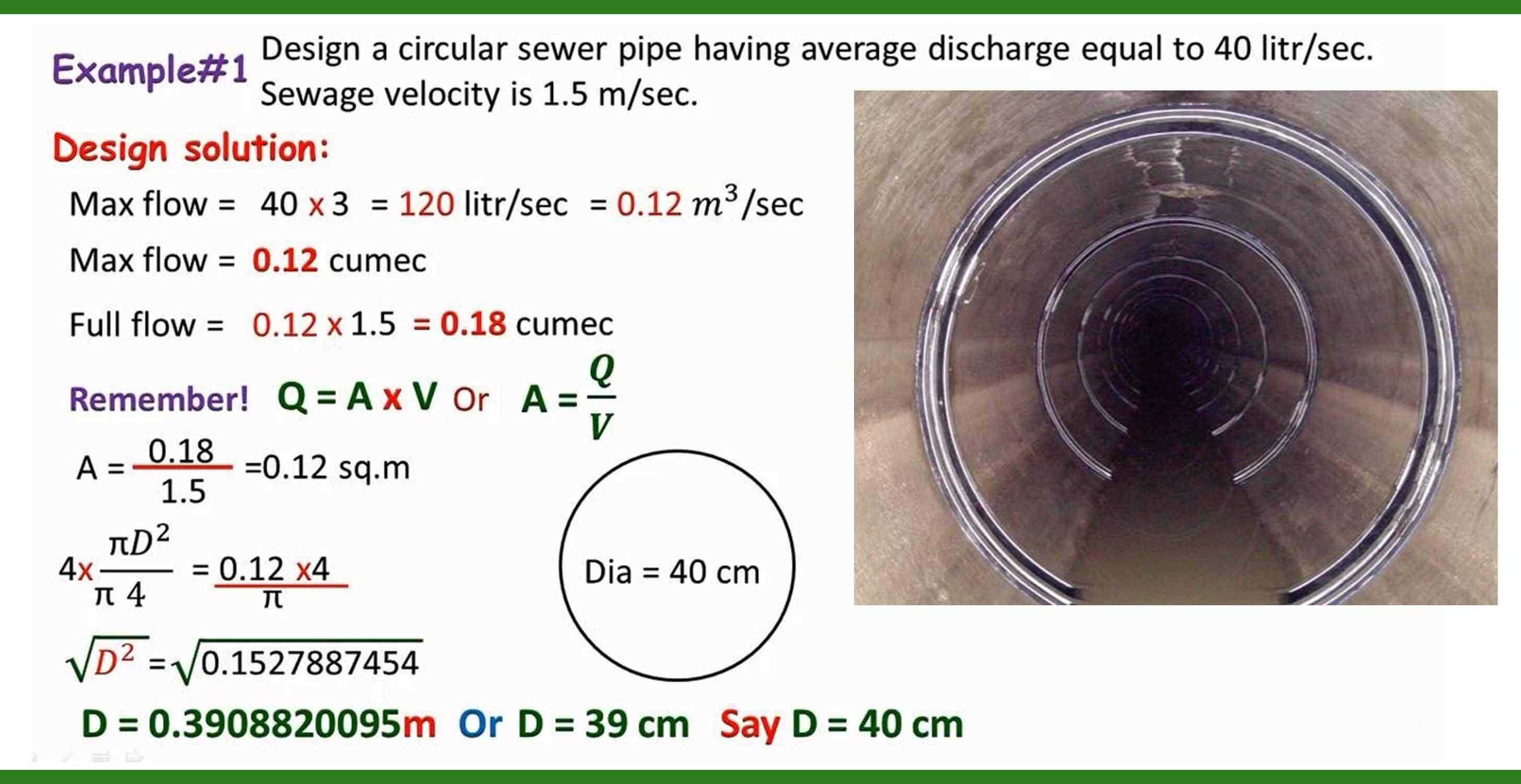This construction video tutorial sheds light on the methods for a sewer line or sewer pipe as well as different types of sewer pipe. Based on the section, sewer pipe comes in different shapes like circular and semi-circular sewer pipe, rectangular sewer pipe, elliptical sewer pipe, egg-shaped sewer pipe, basket handle sewer pipe, horseshoe sewer pipe.
Here, the calculation for design is shown for each type of sewer pipe mentioned above.
In the first example, the method is demonstrated for designing a circular sewer pipe that offers average discharge equivalent to 40 litres/sec. Sewage velocity is 1.5 m/sec.
The following formula is used for design calculation
Maximum flow of sewage = 40 x 3 (here 40 denotes average discharge)
N.B. In order to transform average discharge into maximum discharge, it is required to multiply the average flow with 2 or 3 that is recognized as a multiplying factor.
Therefore, after the multiplication, the result is = 120 litres/sec.
Now, convert the unit of litre into cubic meter by dividing it with 1000
The result is = 0.12 m3/sec, it is also called as cumec
Therefore, maximum flow = 0.12 cumec
But with this, the sewer pipe can flow up to 2/3 but for designing the sewer for full flow, the following method should be applied.
Full flow = 0.12 x 1.5 = 0.18 cumec (1.5 is obtained by dividing 3 by 2)
To get more information, go through the following video.






